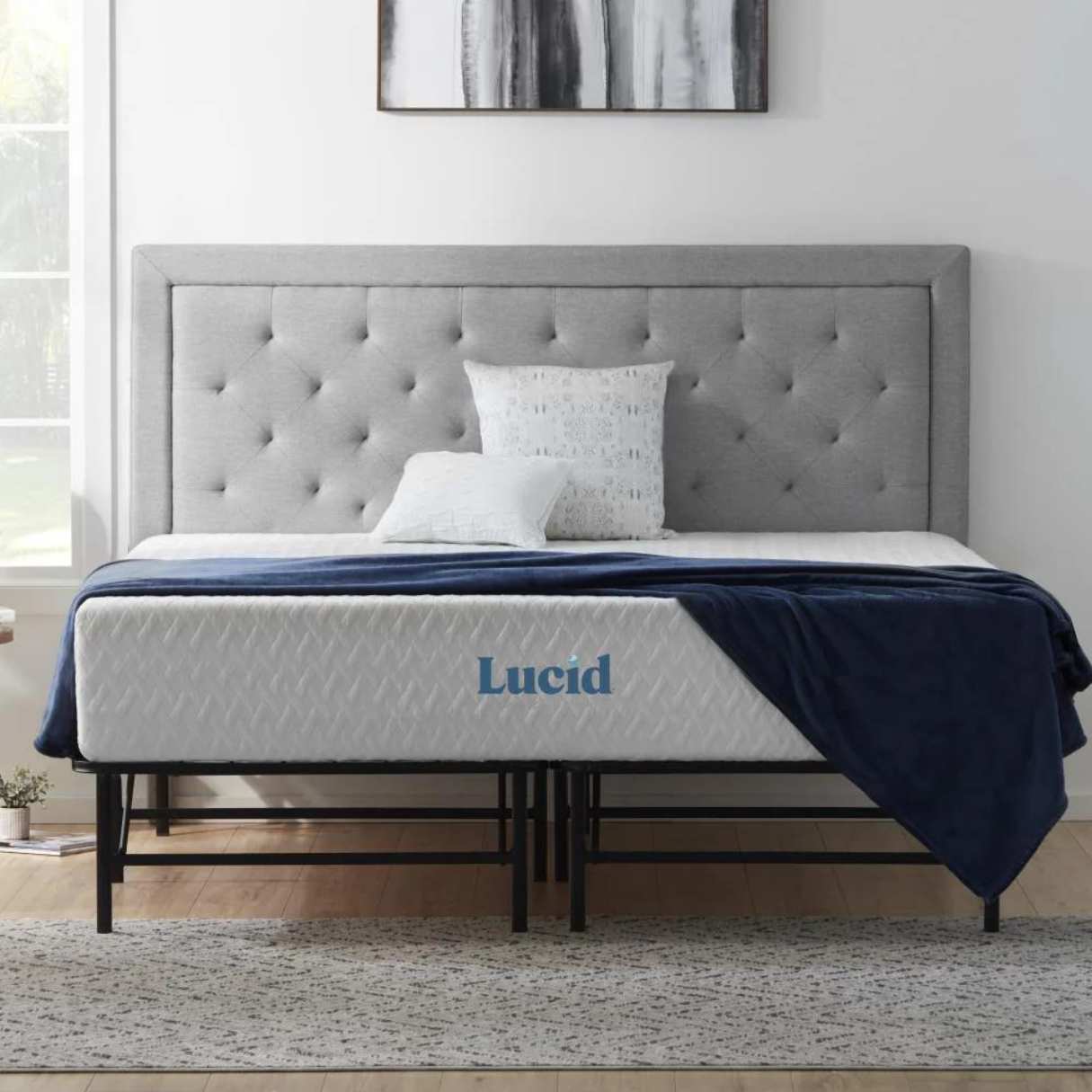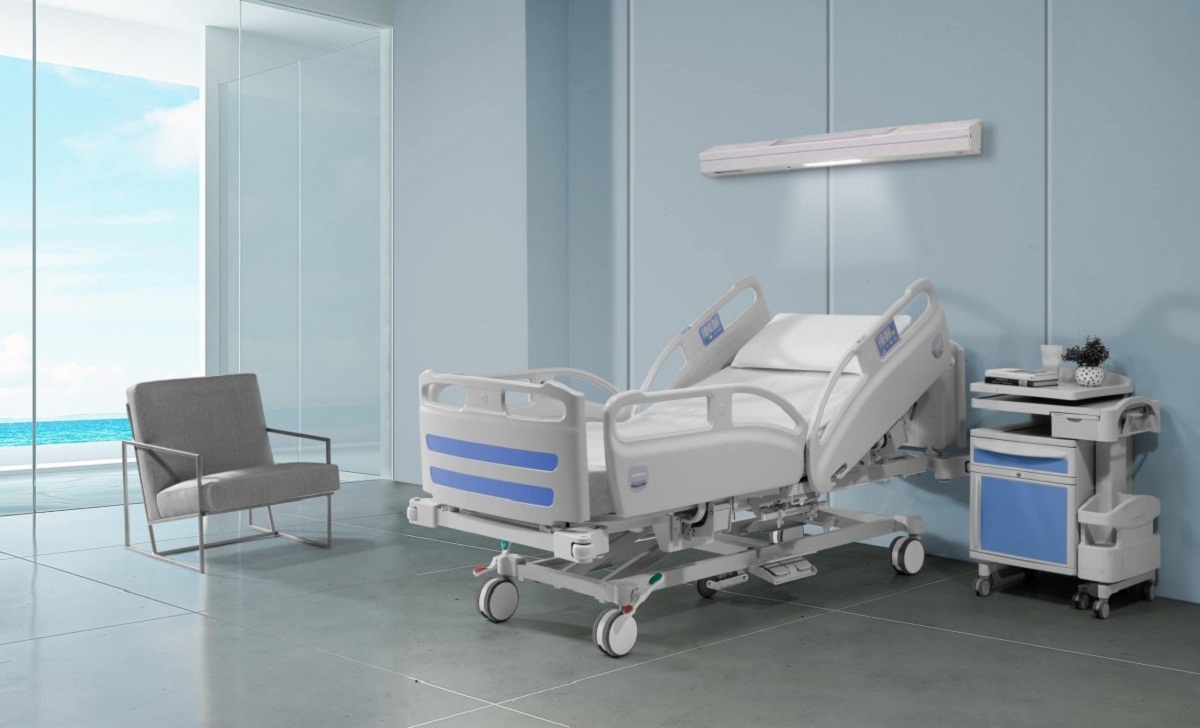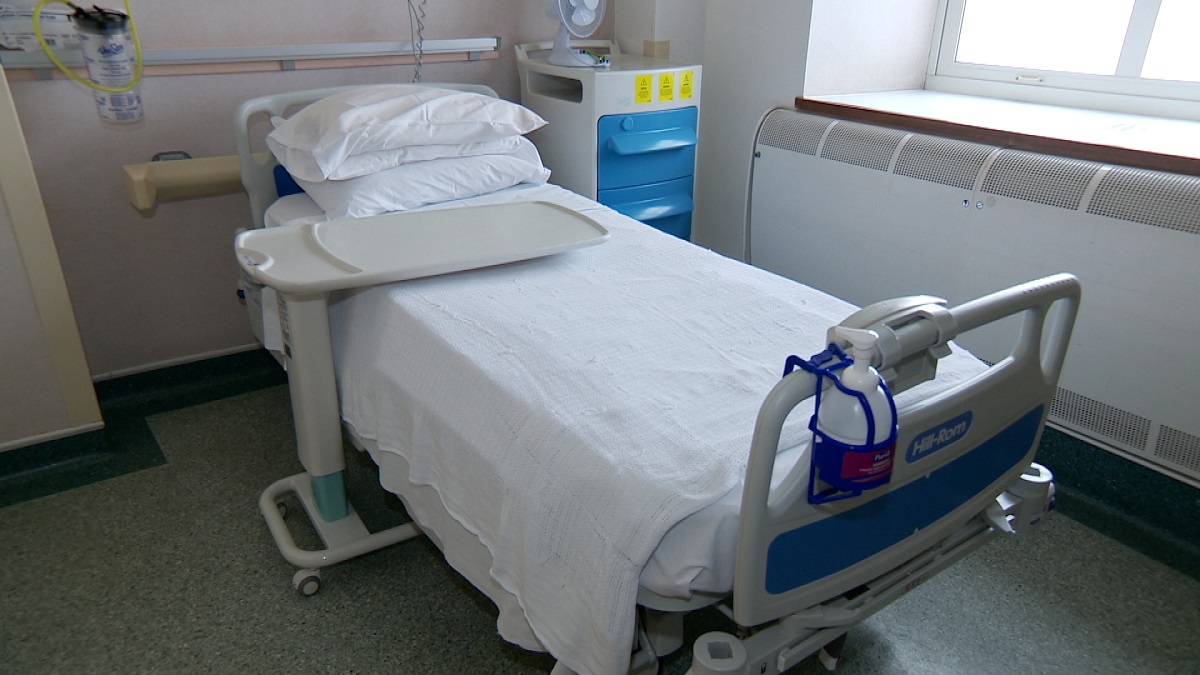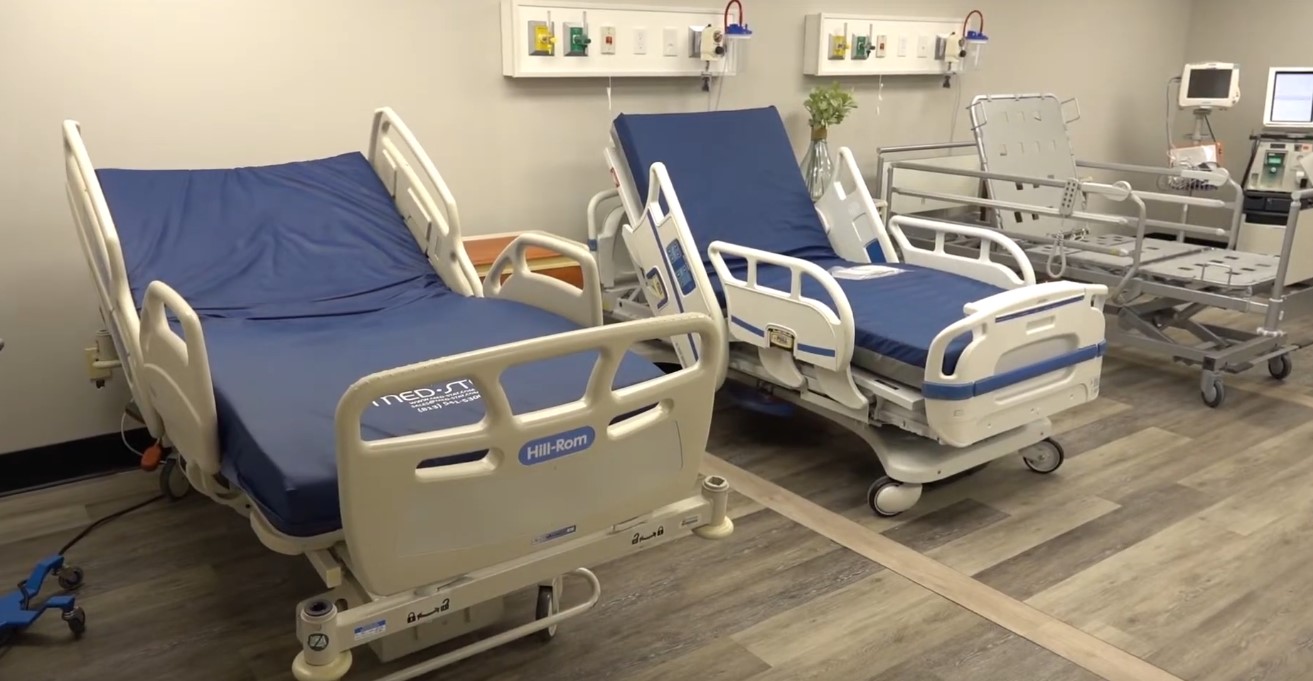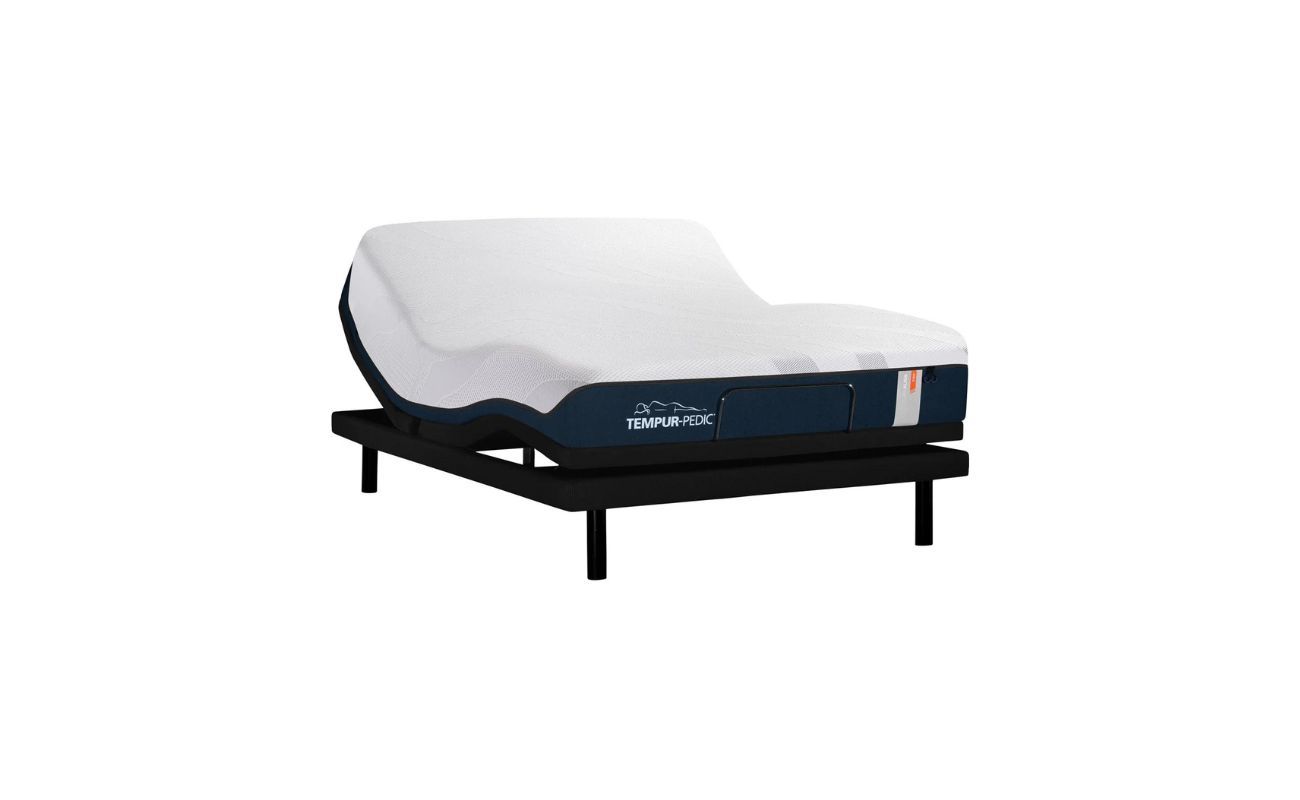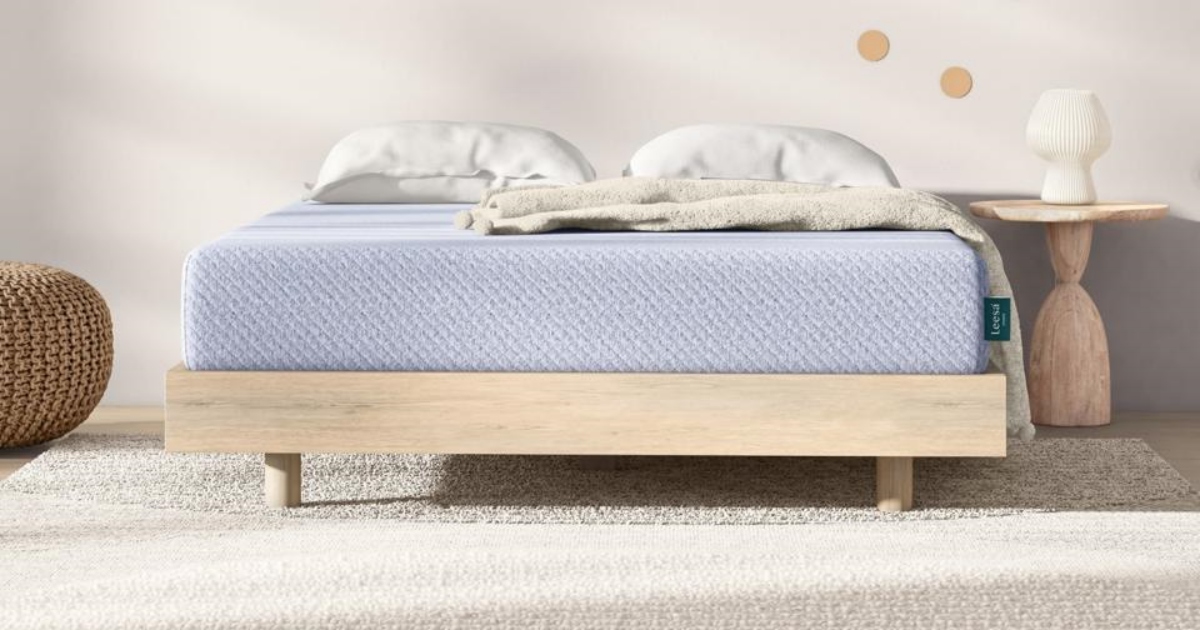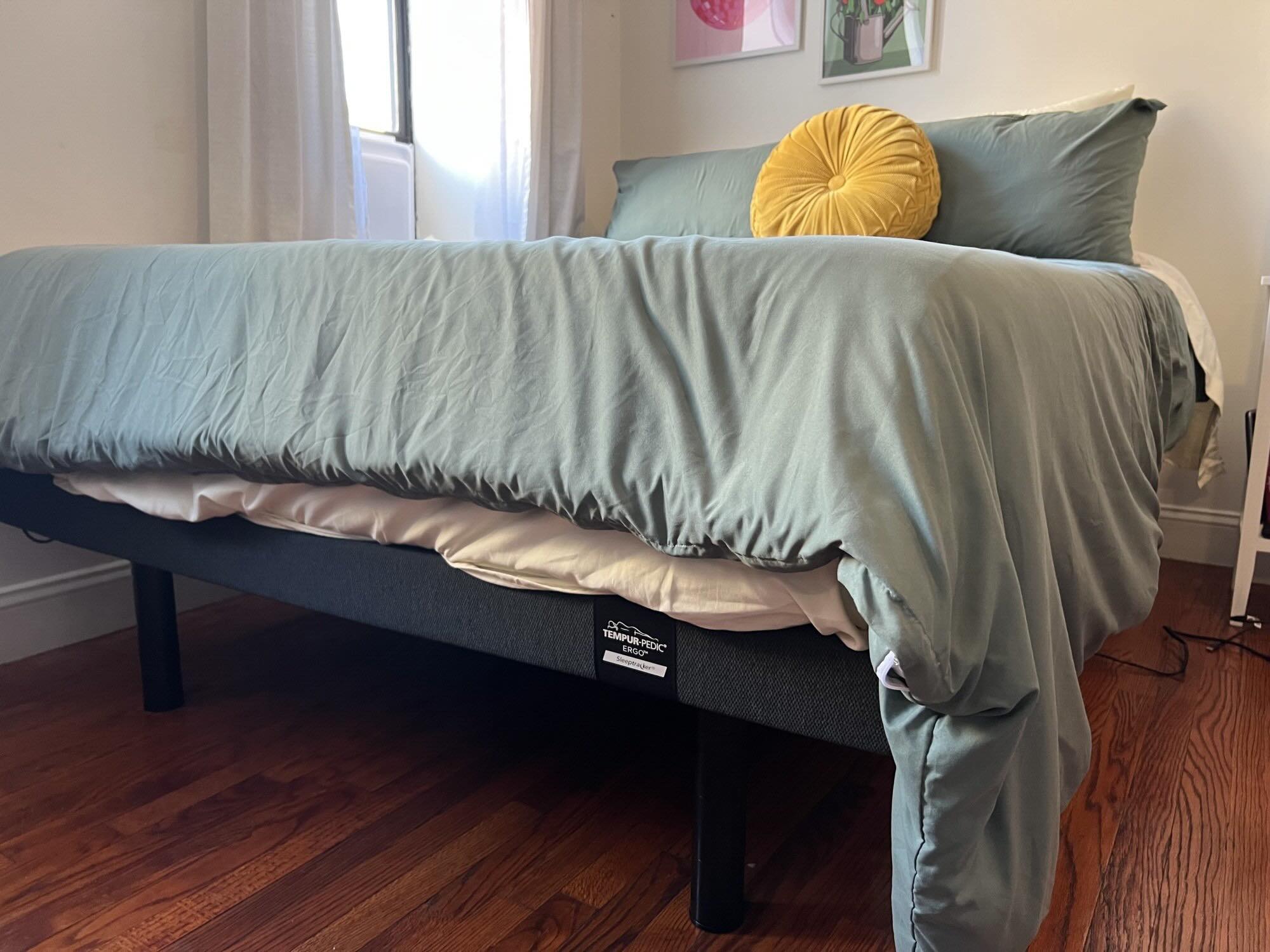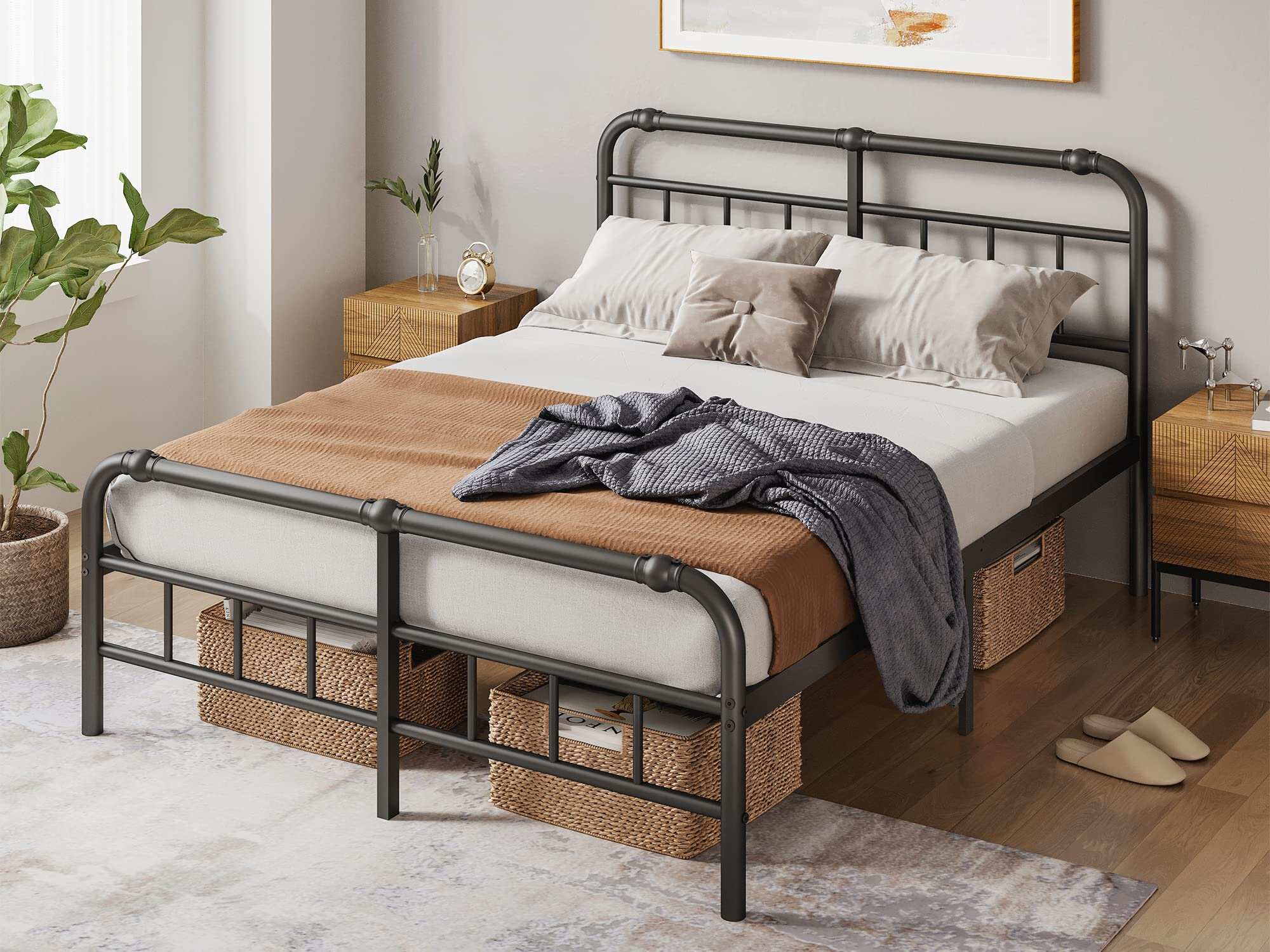Home>Furniture>Bedroom Furniture>What Kind Of Mattress Is Best For A Hospital Bed
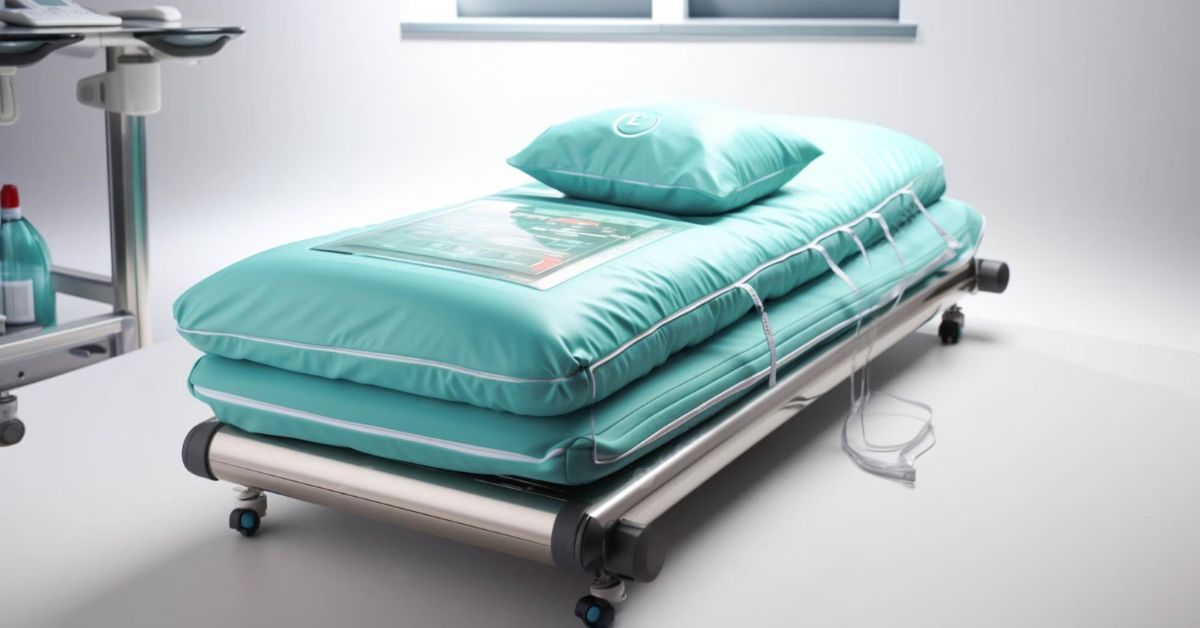

Bedroom Furniture
What Kind Of Mattress Is Best For A Hospital Bed
Modified: January 9, 2024
Find the perfect mattress for your hospital bed with our comprehensive guide. Discover the best bedroom furniture options for a comfortable and supportive sleep.
(Many of the links in this article redirect to a specific reviewed product. Your purchase of these products through affiliate links helps to generate commission for Storables.com, at no extra cost. Learn more)
Introduction
When it comes to hospital beds, comfort and support are of the utmost importance. And at the heart of every comfortable hospital bed lies a high-quality mattress. A good mattress can make a world of difference in providing the necessary comfort, support, and pressure relief for patients who spend extended periods of time in bed.
Choosing the right mattress for a hospital bed is crucial not only for the patient’s well-being but also for facilitating the recovery process. The right mattress can alleviate pain, prevent bedsores, and promote a good night’s sleep, which is essential for healing and recovery.
In this article, we will explore the importance of selecting the best mattress for hospital beds and discuss the factors to consider when making this decision. We will also delve into the different types of mattresses commonly used in hospital beds, and the benefits and drawbacks of each type.
Whether you are a healthcare professional looking to purchase mattresses for a hospital or a caregiver considering the best options for a loved one’s home healthcare bed, this article aims to provide you with the knowledge needed to make an informed decision.
So let’s dive into the world of hospital bed mattresses and discover what kind of mattress is best suited for your needs.
Key Takeaways:
- The right hospital bed mattress is crucial for patient comfort, recovery, and caregiver convenience. Factors like pressure relief, support, and maintenance should be carefully considered to enhance the patient’s well-being and healthcare experience.
- Foam, innerspring, air, gel, and alternating pressure mattresses each offer unique benefits and considerations. Understanding these factors and consulting with healthcare professionals can help in selecting the most suitable mattress for a hospital bed.
Read more: What Size Is A Hospital Bed Mattress
Importance of the Mattress for Hospital Beds
Choosing the right mattress for a hospital bed is crucial for several reasons. First and foremost, it is vital for patient comfort. Hospitalized individuals often spend extended periods of time in bed, and a comfortable mattress can significantly enhance their overall well-being.
Comfort is not just a luxury but a necessity for patients. It helps alleviate pain, promote relaxation, and improve sleep quality. A mattress that provides adequate support and pressure relief can prevent discomfort and minimize the risk of bedsores, which can be painful and potentially lead to complications.
In addition to patient comfort, the right mattress also plays a crucial role in patient recovery. A good-quality mattress can support proper body alignment and allow for better circulation, aiding in the healing process. It can alleviate pressure on specific body areas, reducing the risk of pressure ulcers and promoting the healing of existing ones.
Moreover, a well-designed hospital bed mattress can assist in managing certain medical conditions. For example, patients with respiratory issues may benefit from a mattress that allows for better ventilation and supports proper breathing. Those with mobility limitations or orthopedic injuries can benefit from a mattress that provides optimal support and eases movement in and out of bed.
Choosing the right mattress is not only crucial for patient comfort and recovery but also for the caregiver’s convenience. An appropriate mattress can make caregiving tasks easier, such as turning or repositioning the patient. It can also contribute to maintaining a hygienic environment by being easy to clean and resistant to water or fluid ingress.
Overall, the selection of a suitable mattress for hospital beds is vital for patient comfort, recovery, and the ease of caregiving. It is an investment in the patient’s well-being and can greatly contribute to their overall quality of life during their hospital stay or home healthcare period.
Factors to Consider When Choosing a Hospital Bed Mattress
When selecting a mattress for a hospital bed, there are several factors to consider to ensure the best fit for the patient’s needs. Here are some important factors to keep in mind:
- Patient’s Medical Condition: The patient’s specific medical condition should be the primary consideration when choosing a mattress. Different conditions, such as pressure ulcers, respiratory issues, or mobility limitations, require different types of support and pressure relief. Consulting with the patient’s healthcare team can provide valuable insights into the specific requirements.
- Pressure Relief: Pressure relief is crucial to prevent the development of bedsores or pressure ulcers. Look for a mattress that distributes weight evenly and provides sufficient cushioning to reduce pressure on vulnerable areas. Consider mattresses with features like foam layers or alternating pressure systems for effective pressure relief.
- Support and Alignment: Optimal spinal alignment and support are essential for patient comfort and proper body positioning. Look for mattresses that offer adequate support to maintain the natural curves of the spine. Mattresses with zoned support or adjustable firmness may be beneficial for patients with specific support needs.
- Comfort: Comfort is subjective, and it is essential to choose a mattress that offers the right level of comfort for the patient. Consider factors such as mattress firmness, surface temperature, and material preferences. Memory foam or gel-infused mattresses can provide a plush and contouring feel, while innerspring mattresses offer a more traditional and responsive surface.
- Easy Maintenance: Hospital environments require mattresses that are easy to maintain and keep clean. Look for mattresses that are waterproof or have removable, washable covers to prevent fluid ingress and facilitate regular cleaning and disinfection.
- Budget and Durability: Consider the cost and durability of the mattress. While it is important to find a mattress within your budget, keep in mind that quality and durability are key. Investing in a durable mattress will ensure long-term use and reduce the need for frequent replacements.
It is important to assess these factors and prioritize the needs and preferences of the patient when choosing a hospital bed mattress. Consulting with healthcare professionals and mattress specialists can provide valuable guidance in selecting the most suitable option.
Types of Mattresses Commonly Used in Hospital Beds
There are several types of mattresses commonly used in hospital beds, each designed to cater to specific needs and provide optimal comfort and support for patients. Understanding the characteristics of each type can help in choosing the most appropriate mattress. Here are the most common types:
- Foam Mattresses: Foam mattresses are a popular choice for hospital beds due to their ability to conform to the body’s contours, providing excellent pressure relief. They are made of layers of foam with varying densities, offering support and comfort. Foam mattresses are known for their durability and are available in different levels of firmness to accommodate individual preferences.
- Innerspring Mattresses: Innerspring mattresses consist of a core of metal coils or springs, covered with layers of padding and upholstery materials. They offer good support, bounce, and firmness. Innerspring mattresses are suitable for patients who prefer a more traditional feel and those who require a firmer surface for support.
- Air Mattresses: Air mattresses use air chambers that can be adjusted to achieve the desired level of firmness or softness. These mattresses have the advantage of customizable support, allowing caregivers or patients to adjust the mattress according to their needs. Some air mattresses also come with features like alternating pressure, which helps with circulation and pressure relief.
- Gel Mattresses: Gel mattresses have gel-infused foam layers that provide excellent pressure relief and regulate body temperature. The gel helps distribute weight evenly and promotes airflow, keeping the mattress cool and comfortable. These mattresses are suitable for patients who require extra cushioning and temperature regulation.
- Alternating Pressure Mattresses: Alternating pressure mattresses are specifically designed for patients at high risk of developing pressure ulcers. These mattresses have multiple air chambers that inflate and deflate in a cyclic pattern, redistributing pressure and promoting blood circulation. The alternating pressure helps prevent the formation of pressure sores and aids in their healing.
Each type of mattress has its own benefits and considerations. It is important to assess the specific needs of the patient, such as pressure relief, support, and comfort, to determine the most suitable type of mattress for their condition.
It is also worth noting that hybrid mattresses, which combine different materials like foam, innerspring, or gel, are available in the market. These mattresses aim to provide the benefits of multiple materials in one product, offering a unique combination of support, comfort, and pressure relief.
Consulting with healthcare professionals or mattress specialists can help in identifying the best type of mattress to meet the specific needs of the patient and ensure their comfort and well-being.
Foam Mattresses
Foam mattresses are a popular choice in hospital beds due to their ability to provide exceptional comfort and pressure relief. These mattresses are constructed from multiple layers of foam with varying densities and firmness levels.
One of the primary advantages of foam mattresses is their ability to conform to the shape of the body, offering personalized support and cushioning. They distribute the body weight evenly, reducing pressure points and minimizing the risk of bedsores for patients who spend extended periods in bed.
There are different types of foam used in these mattresses, each with its unique characteristics:
- Memory Foam: Memory foam is a popular material known for its contouring properties. It reacts to body heat and molds to the individual’s shape, providing excellent pressure relief and support. Memory foam mattresses are known for their ability to minimize motion transfer, making them ideal for patients sharing a bed.
- Latex Foam: Latex foam mattresses are made from natural or synthetic latex, offering similar contouring properties to memory foam. They provide a responsive and supportive surface, with a bit more bounce compared to memory foam. Latex mattresses are known for their durability, resilience, and breathability.
- High-Density Foam: High-density foam mattresses are made from a firmer type of foam, offering enhanced support and durability. They provide a solid sleep surface and are commonly used in hospital settings for patients with specific support needs.
Foam mattresses offer several benefits that make them suitable for hospital beds:
- Pressure Relief: Foam mattresses excel in providing pressure relief by conforming to the body’s contours and reducing pressure on vulnerable areas.
- Comfort: The soft and cushioning nature of foam mattresses ensures a comfortable sleep surface, enhancing the patient’s overall well-being.
- Noise Reduction: Foam mattresses are typically silent, making them ideal for patients who are easily disturbed by noise.
- Temperature Regulation: Many foam mattresses are designed with breathable materials to promote airflow and prevent overheating.
However, it is important to consider a few potential drawbacks of foam mattresses:
- Heat Retention: Some foam mattresses may trap body heat, causing discomfort for patients who are sensitive to temperature changes.
- Edge Support: Foam mattresses, especially memory foam, may have weaker edge support compared to other types, making it difficult to sit or sleep near the edge.
- Initial Odor: Newly purchased foam mattresses may emit a slight odor upon unboxing, but it typically dissipates within a few days.
Overall, foam mattresses are a popular choice for hospital beds due to their excellent pressure relief, comfort, and ability to conform to the body. By considering the specific needs and preferences of the patient, healthcare professionals and caregivers can select the most suitable foam mattress for optimal patient comfort and support.
Read more: What Size Is A Hospital Bed
Innerspring Mattresses
Innerspring mattresses are a traditional and widely-used option in hospital beds. These mattresses are constructed with a core of metal coils or springs, surrounded by layers of padding and upholstery materials.
One of the key advantages of innerspring mattresses is their firm and responsive support. The coils or springs provide a supportive base while allowing for some degree of bounce and movement. This can be beneficial for patients who require a firmer sleep surface or for those who need assistance in getting in and out of bed.
Here are some important characteristics and considerations of innerspring mattresses:
- Firmness Options: Innerspring mattresses are available in various firmness options, allowing patients to choose the level of support that is most comfortable for them.
- Durability: High-quality innerspring mattresses are known for their longevity and durability. They can withstand frequent use and maintain their shape and support over time.
- Temperature Regulation: Innerspring mattresses provide better airflow compared to foam mattresses, allowing for efficient heat dissipation and keeping the sleep surface cool.
- Edge Support: Innerspring mattresses typically have reinforced edges, providing better support and stability when sitting or sleeping near the edge of the bed.
- Minimal Motion Transfer: The structure of innerspring mattresses reduces motion transfer, making them suitable for patients sharing a bed.
However, it is important to consider a few potential drawbacks of innerspring mattresses:
- Less Conforming: Innerspring mattresses offer less contouring and pressure relief compared to foam or latex mattresses. They may not provide as customized support for patients with specific needs.
- Potential Noise: Some innerspring mattresses may produce noise or squeaking when weight is applied or when significant movement occurs. This can be a consideration for patients who are sensitive to sound or easily disturbed during sleep.
- Less Motion Isolation: Innerspring mattresses may transmit more movement across the sleep surface, which can be a concern for patients who are easily disturbed by their partner’s movements.
Innerspring mattresses are a reliable and time-tested option for hospital beds, offering a combination of support, firmness, and durability. By considering the needs and preferences of the patient, healthcare professionals and caregivers can choose the most suitable innerspring mattress to promote patient comfort and restful sleep.
Air Mattresses
Air mattresses, also known as airbeds, are an innovative option commonly used in hospital beds. These mattresses consist of individual air chambers that can be adjusted to achieve the desired level of firmness or softness.
One of the significant advantages of air mattresses is their customizable support. By inflating or deflating the air chambers, caregivers or patients can adjust the mattress according to their specific comfort and support needs. This makes air mattresses suitable for patients with varying medical conditions and preferences.
Here are some important characteristics and considerations of air mattresses:
- Adjustable Support: Air mattresses allow for personalized support by adjusting the firmness level according to the patient’s comfort preferences or medical requirements.
- Pressure Relief: Some air mattresses offer alternating pressure systems, which inflate and deflate different chambers in a cyclic pattern. This promotes circulation, reduces pressure points, and prevents the development of pressure ulcers.
- Customizable Comfort: Patients can adjust the air pressure in different areas of the mattress to achieve a customized level of comfort and support for specific body parts.
- Reduced Motion Transfer: Air mattresses minimize motion transfer, allowing for uninterrupted sleep, especially for patients sharing a bed.
- Portability: Many air mattresses are lightweight and easy to transport, making them convenient for home healthcare or when patients need to move between different healthcare settings.
However, it is important to consider a few potential drawbacks of air mattresses:
- Complex Setup and Maintenance: Air mattresses require proper setup and ongoing maintenance to ensure optimal performance and prevent leaks or malfunctions.
- Noise: Some air mattresses may produce noise when air is being adjusted or redistributed within the mattress. This can be a consideration for patients who are sensitive to sound or easily disturbed during sleep.
- Possibility of Air Leakage: While rare, there is a possibility of air leakage in air mattresses, which may require regular checking and maintenance to ensure continued functionality.
Air mattresses provide a versatile and customizable solution for hospital beds, offering adjustable support and pressure relief. By considering the specific needs of the patient and consulting with healthcare professionals, caregivers can choose the most suitable air mattress to promote optimal comfort and support during the patient’s recovery or long-term care.
Gel Mattresses
Gel mattresses are a popular choice for hospital beds as they provide enhanced pressure relief and temperature regulation. These mattresses incorporate gel-infused foam layers that offer a unique combination of support, comfort, and breathability.
One of the primary advantages of gel mattresses is their ability to conform to the body’s contours, distributing weight evenly and reducing pressure points. The gel-infused foam provides a supportive and cushioning surface that can alleviate discomfort and minimize the risk of pressure ulcers for patients who are bedridden or have limited mobility.
Here are some important characteristics and considerations of gel mattresses:
- Pressure Relief: Gel mattresses excel in providing excellent pressure relief by contouring to the body and dispersing weight evenly across the surface.
- Temperature Regulation: The gel-infused foam layers in these mattresses help dissipate heat, preventing the build-up of body heat and keeping the sleep surface cool and comfortable.
- Comfortable Support: Gel mattresses offer a balance of support and cushioning, providing a comfortable sleep surface for patients with varying comfort preferences and medical conditions.
- Reduced Motion Transfer: Similar to foam mattresses, gel mattresses are known for their minimal motion transfer, allowing for undisturbed sleep, especially for patients sharing a bed.
- Hypoallergenic Properties: Gel mattresses are often hypoallergenic and resistant to dust mites and allergens, promoting a healthier sleep environment.
However, it is important to consider a few potential drawbacks of gel mattresses:
- Weight: Gel mattresses tend to be heavier than other types of mattresses, which can make them more difficult to handle or transport.
- Expense: Gel mattresses may be more expensive compared to traditional foam or innerspring mattresses. However, the long-term benefits and comfort they provide may justify the investment.
- Response Time: Due to the nature of the gel-infused foam, gel mattresses may have a slower response time compared to traditional foam mattresses. This means they may take a bit longer to adjust to changes in body position.
Gel mattresses offer a unique combination of pressure relief, temperature regulation, and comfort for patients in hospital beds. By considering the specific needs and preferences of the patient, healthcare professionals and caregivers can choose the most suitable gel mattress to enhance patient comfort and promote a restful sleep environment.
Alternating Pressure Mattresses
Alternating pressure mattresses are specialized mattresses designed to prevent and treat pressure ulcers or bedsores. These mattresses utilize a system of air chambers that inflate and deflate in a cyclic pattern, redistributing pressure and promoting blood flow.
The key feature of alternating pressure mattresses is their ability to constantly change pressure points, relieving pressure on vulnerable areas of the body. By periodically alternating the pressure, these mattresses help prevent the formation of pressure ulcers and promote the healing of existing ulcers.
Here are some important characteristics and considerations of alternating pressure mattresses:
- Pressure Redistribution: Alternating pressure mattresses constantly adjust and redistribute pressure across the patient’s body, reducing the risk of developing pressure ulcers.
- Increased Blood Flow: By alternating pressure, these mattresses facilitate better blood circulation, which is crucial for promoting tissue health and aiding in the healing process of existing ulcers.
- Cycle Adjustability: The cycle time and pressure settings of alternating pressure mattresses can often be customized, allowing healthcare professionals to tailor the settings to the individual patient’s needs.
- Variable Firmness: Some alternating pressure mattresses offer adjustable levels of firmness, allowing patients to find the most comfortable support for their bodies.
- Additional Features: Many alternating pressure mattresses come with features such as low air loss, which helps maintain a dry and comfortable sleep surface, and audible or visual alarms to alert caregivers in case of air pressure fluctuations or system malfunctions.
However, it is important to consider a few potential drawbacks of alternating pressure mattresses:
- Noise: The inflation and deflation of the air chambers in alternating pressure mattresses can produce noise, which may disturb patients who are sensitive to sound.
- Complex Setup and Maintenance: Alternating pressure mattresses require proper setup, regular monitoring, and maintenance to ensure optimal performance and prevent malfunctions.
- Cost: Alternating pressure mattresses tend to be more expensive compared to other types of mattresses due to their specialized design and functionality.
Alternating pressure mattresses are a vital tool in the prevention and treatment of pressure ulcers for patients in hospital beds. They provide unique pressure redistribution and promote blood flow, helping to improve patient comfort and reduce the risk of complications. Healthcare professionals can work closely with patients and caregivers to determine the most suitable alternating pressure mattress settings for optimal therapeutic benefits.
When choosing a mattress for a hospital bed, look for one that provides pressure relief to prevent bedsores, is easy to clean, and offers good support for the patient’s comfort and recovery. Consider options like foam or air mattresses designed for medical use.
Read more: What Size Sheets Fit A Hospital Bed
Benefits and Drawbacks of Each Type of Mattress
Each type of hospital bed mattress has its own set of benefits and drawbacks. Understanding these factors can help in selecting the most suitable mattress for the patient’s needs. Here’s a roundup of the benefits and drawbacks of each type of mattress:
Foam Mattresses:
Benefits:
- Excellent pressure relief and body contouring
- Customized support based on foam density and firmness options
- Durability and long-lasting performance
- Minimal noise and motion transfer
Drawbacks:
- Potential heat retention in some foam mattresses
- Weaker edge support compared to other types
- Possible initial odor upon unboxing
Innerspring Mattresses:
Benefits:
- Firm and responsive support
- Varying firmness options to suit individual preferences
- Durability and long lifespan
- Good edge support for ease of getting in and out of bed
Drawbacks:
- Less conforming and pressure relief compared to foam mattresses
- Possible noise or squeaking with movement
- Potential motion transfer between sleep partners
Air Mattresses:
Benefits:
- Adjustable support and firmness for personalized comfort
- Pressure relief and prevention of bedsores
- Reduced motion transfer for undisturbed sleep
- Portability and easy transportation
Drawbacks:
- Complex setup and maintenance to ensure proper functionality
- Possible noise during air adjustment or redistribution
- Potential air leakage in some cases
Read more: What Kind Of Pillows Do Hospitals Use
Gel Mattresses:
Benefits:
- Pressure relief and contouring for enhanced comfort
- Temperature regulation and heat dissipation
- Reduced motion transfer and partner disturbance
- Hypoallergenic properties for a healthier sleep environment
Drawbacks:
- Heavier weight compared to other types of mattresses
- Higher cost compared to traditional foam or innerspring mattresses
- Potential slower response time compared to traditional foam mattresses
Alternating Pressure Mattresses:
Benefits:
- Continuous pressure redistribution for pressure ulcer prevention and treatment
- Increased blood flow and tissue oxygenation
- Customizable settings for individualized support and therapy
- Reduced risk of skin breakdown and bedsores
Drawbacks:
- Possible noise during inflation and deflation of air chambers
- Complex setup and regular maintenance requirements
- Higher cost compared to standard mattresses
Considering these benefits and drawbacks can help caregivers and healthcare professionals make an informed decision when selecting the most suitable mattress for their patients’ specific needs. It is crucial to prioritize comfort, pressure relief, support, and overall well-being when choosing a mattress for hospital beds.
Factors to Consider When Selecting the Best Mattress for a Hospital Bed
Choosing the best mattress for a hospital bed requires careful consideration of various factors to ensure optimal comfort and support for the patient. Here are the key factors to keep in mind:
- Patient’s Medical Condition: Take into account the patient’s specific medical condition and needs. Different conditions, such as pressure ulcers, respiratory issues, or mobility limitations, require specific support and pressure relief. Consult with the patient’s healthcare team to understand their medical requirements.
- Pressure Relief: Look for a mattress that provides effective pressure relief. It should distribute weight evenly and reduce pressure on vulnerable areas, helping to prevent bedsores and promote healing. Mattresses with memory foam, gel-infused foam, or alternating pressure systems are known for their pressure-relieving properties.
- Support and Alignment: Optimal support and alignment are crucial for patient comfort and proper body positioning. Choose a mattress that provides adequate support to maintain the natural curves of the spine. Consider mattresses with zoned support or adjustable firmness for tailored support based on the patient’s needs.
- Comfort: Comfort is subjective and plays a significant role in patient satisfaction. Consider factors such as mattress firmness, surface temperature, and material preferences (e.g., foam, innerspring, or gel). Memory foam and gel mattresses can offer a plush and contouring feel, while innerspring mattresses provide a more traditional and responsive surface.
- Easy Maintenance and Safety: Hospital environments require mattresses that are easy to maintain and keep clean. Look for mattresses with removable, washable covers or waterproof properties to prevent fluid ingress and facilitate regular cleaning. Additionally, consider safety features such as low air loss for moisture control or alarms for pressure redistribution systems.
- Budget and Durability: Consider the budget available for the mattress, but keep in mind that quality and durability are important. Investing in a durable mattress can save costs in the long run by reducing the need for frequent replacements. Evaluate warranties and life expectancy when assessing the durability of different mattresses.
By considering these factors, healthcare professionals and caregivers can select the best mattress for a hospital bed that meets the specific needs and preferences of the patient. It is crucial to prioritize patient comfort, proper support, pressure relief, and overall well-being to facilitate effective and efficient care.
Conclusion
Choosing the best mattress for a hospital bed is a critical decision that directly impacts the comfort, support, and well-being of patients. The right mattress can alleviate pain, prevent bedsores, and promote a good night’s sleep, which is essential for the healing and recovery process.
Considering factors such as the patient’s medical condition, pressure relief, support and alignment, comfort, easy maintenance, and budget can help in selecting the most suitable mattress. Foam mattresses offer excellent pressure relief and contouring, while innerspring mattresses provide firm and responsive support. Air mattresses allow for adjustable support and pressure relief, while gel mattresses offer enhanced comfort and temperature regulation. Alternating pressure mattresses are ideal for preventing and treating pressure ulcers.
While each type of mattress has its benefits and drawbacks, it is crucial to prioritize patient comfort, support, pressure relief, and overall well-being. By consulting with healthcare professionals and considering the specific needs of the patient, caregivers can make an informed decision to select the best mattress for a hospital bed.
Remember, the ultimate goal is to enhance the patient’s comfort, promote healing, and create an environment that supports their recovery. Investing in a high-quality mattress that meets the specific requirements of the patient can significantly contribute to their overall well-being and improve their healthcare experience.
So, whether you are a healthcare professional looking to purchase mattresses for a hospital or a caregiver considering the best options for a loved one’s home healthcare bed, take the time to evaluate the different mattress types, understand the needs of the patient, and make an informed decision. A good mattress can make all the difference in providing the necessary comfort, support, and pressure relief for patients in hospital beds.
Frequently Asked Questions about What Kind Of Mattress Is Best For A Hospital Bed
Was this page helpful?
At Storables.com, we guarantee accurate and reliable information. Our content, validated by Expert Board Contributors, is crafted following stringent Editorial Policies. We're committed to providing you with well-researched, expert-backed insights for all your informational needs.
